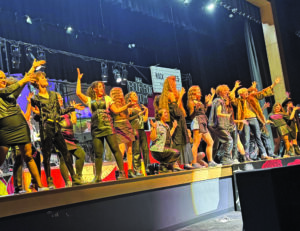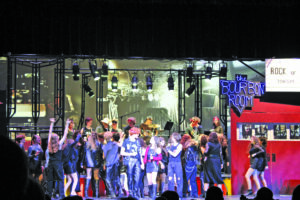Economic development has played such a major role in the advancement of key quality of life issues in the City of Falls Church, funding its first-rate public school system, providing resources for key upgrades of vital services, such as major renovations of City Hall, the public library, stormwater improvements, sidewalks and neighborhood traffic calming technologies. All this and a robust 13 cent cut in the real estate tax rate from $1.365 per $100 of assessed value to the current level of $1.23, with a lot more in cuts to come.
According to Lisa Benjamin, a respected regional economic development consultant, speaking to the work session of the Falls Church City Council this week, the upsides for Falls Church far outweigh the challenges, even by comparison to its regional neighbors. “There is way more opportunity than challenge for Falls Church,” she said.
She cited the case of office and retail vacancy rates, to point right at the one issue that some are saying is worrisome for the City. Put simply, the vacancy rates in the Little City are a fraction of what they were in Tysons Corner or Arlington, she said. It is a third less of a problem for Tysons and a fourth less for Arlington.
Asked if there could be too many coffee shops, grocery stores or restaurants here, she said no, not at all. They are the kinds of retailers that are thriving in the new realities of the post-pandemic world where there is significantly more working from home and consolidation of travel.

As the City, with an adept local government, moves to become a “15 Minute City,” meaning that residents can find everything they’re looking for within a 15 minute travel radius, Benjamin said, the relationship between retail and creating a better sense of community becomes more important. “There is a great synergy between robust retail and serving the public good,” she said, noting the trend of devoting surface parking lot spaces to community activities.
She hailed Falls Church’s progress in these areas, noting that while the City cannot be defined in terms of an urban core, it is close.
Larger retailers and restaurants are reverting to smaller footprints as the dining or shopping “experience” shifts to providing to-go options, often in tandem with online services.
Good bets for ground floor retail going forward, she suggested, are things like preschools, gyms, wellness centers and auto showrooms.
Her observations fell in line with a “Mixed Use Development Fiscal Impact Report” presented to the Council from the City’s Economic Development team earlier this month.
It noted that nine mixed use development projects currently operational in the City “currently generate $4,458,743 in net tax revenue to the City,” compared to $969,356 on the same 22 acres in their pre-development days.
With a mean floor-to-area ratio (FAR) of a modest 2.54, the total 2023 assessed value of the projects is $786,291,700, and developers have voluntarily contributed $8,851,403 in cash to the public schools capital fund, have provided 108 affordable and “workforce” dwelling units with no expiration dates, and a variety of contributions to the library and parks.
The nine completed projects have provided 2,531,162 square feet of new commercial space, and as of the report, 87.5 percent of the space is leased, owned or otherwise occupied.
The list, with annual net revenue to the City in parenthesis, are as follows:
301 W. Broad ($1,278,342), Spectrum ($1,081,102), Byron ($653,323), Broadway ($570,3i3), Founders Row 1 ($563,325), Lincoln at Tinner Hill ($258,060), Read ($124,881), Northgate ($78,917) and the only negatively-performing space, Pearson Square (minus $149,520).
The Pearson Square exception on S. Maple is due to the fact the residential units converted from large condos to apartments, and are sufficiently large that they welcomed relatively larger family units. With the cost to the City an average of almost $20,000 per youth to educate, the result has been the only negative number among all the nine projects.
There are currently 218 pupils in the total of 1,516 occupied residential units in the nine projects included in the report, and 89 pupils are from Pearson Square/
It is also noted that revenues and expenses from Founders Row 1 were from the beginning of 2023, when there was very little to report compared to what it will be when fully operational. As of now, one of the residential buildings is 95 percent leased, and the other, a senior living project, is 75 percent leased, and key ground floor spaces are also now functional.
These numbers will be adjusted mightily as new projects come on line, namely the massive development of the West End project on 10 acres at the site of the former high school, Founders Row 2 at Broad and West, and the Insight project with its huge Whole Foods well under construction now at Broad and Washington.













